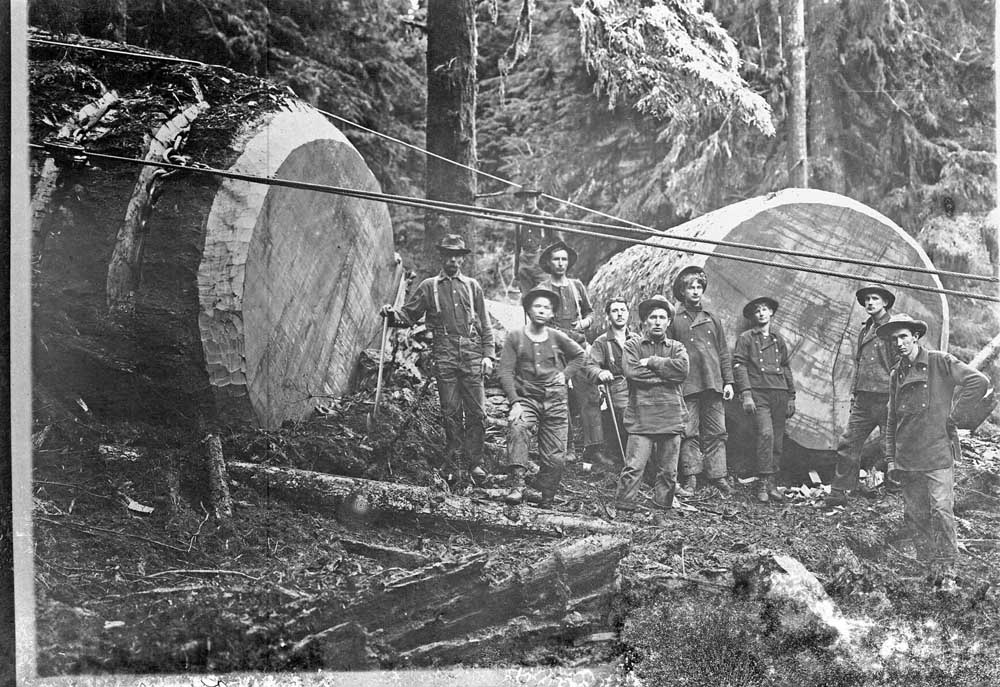Our View: We can do better to protect loggers and fishermen
Published 12:30 am Thursday, March 30, 2023

- Although nowhere near as dangerous as it was around 1900 when this local photograph was taken, logging remains a hazardous occupation.
The death in north Pacific County, Washington, on March 16 of a 55-year-old choke setter, crushed by a tree, is a woeful reminder that logging remains dangerous.
Trending
Rural areas of the Pacific Northwest are still closely allied with traditional natural resource-based jobs, including forestry, fishing, farming and mining. Loggers and fishermen are heroes for providing for their families while producing essential products.
Fishing communities continue to mourn the young crabber and father of three, who is presumed dead after his vessel capsized on the dangerous Willapa Bay bar. It is a throwback to the conditions of the 19th century, when mariners all took their chances when trying to exit into the hard-pounding Pacific Ocean from coastal harbors in Washington state and Oregon.
While being grateful for the congressional action that maintains ocean access for Columbia River ports, it’s lamentable that federal officials and agencies long ago walked away from any serious commitment to Willapa Bay egress.
Trending
Some participants in the logging and fishing industries are skeptical of government-mandated safety steps, believing they interfere with free enterprise and personal liberty without achieving much. But, in fact, historical records show just how much things have changed for the better since the turn of the last century.
Washington’s excellent digital archives offer a local snapshot in the form of the Register of Death in Pacific County, an eye-opening summary of just how cheap life was back then. Besides all the deaths from illnesses that are now easily treatable, the register is a litany of industrial tragedies.
A few examples:
• Age 52 — Killed by being thrown against an iron hook by a load of lumber.
• Age 35 — Killed in a South Bend sawmill.
• Age 48 — Fractured skull, crushed by falling stump.
• Age 27 — Fractured skull, neck broken, arm broken. Log rolled on him.
• Age 30 — Back broken. Hit by log.
• Age 33 — Accidental injury. Cut on circular saw. Hemorrhage.
And there’s hardly a page of the register without drownings, many certainly involving fishermen. Fishing and timber industry accidents were so common as to barely warrant a couple of paragraphs in the newspapers of the time.
The decline in industrial mortality in the past century is thanks to many factors, but it’s only fair to attribute part of the improvement to government regulations that hold employers accountable for maintaining safe equipment and working conditions. The federal Occupational Safety and Health Act, a routine target of attack and ridicule, has saved countless lives. Labor unions and plaintiffs’ attorneys — too often subjects of scorn — help balance the power between workers and employers.
Whether thanks to all the above — or to more humane attitudes and other considerations like mechanization — corporations are nowhere near as cavalier about deaths and injuries as they once appeared to be, and deserve credit for it.
Our recent logging and fishing deaths must serve as reminders that we have to continue seeking ways to avoid these painful losses that tear the hearts out of local families. Perfect safety may never be attainable, but we look to government regulators and the U.S. Coast Guard to carefully investigate these deaths to see what might have been done differently to keep these men alive.









